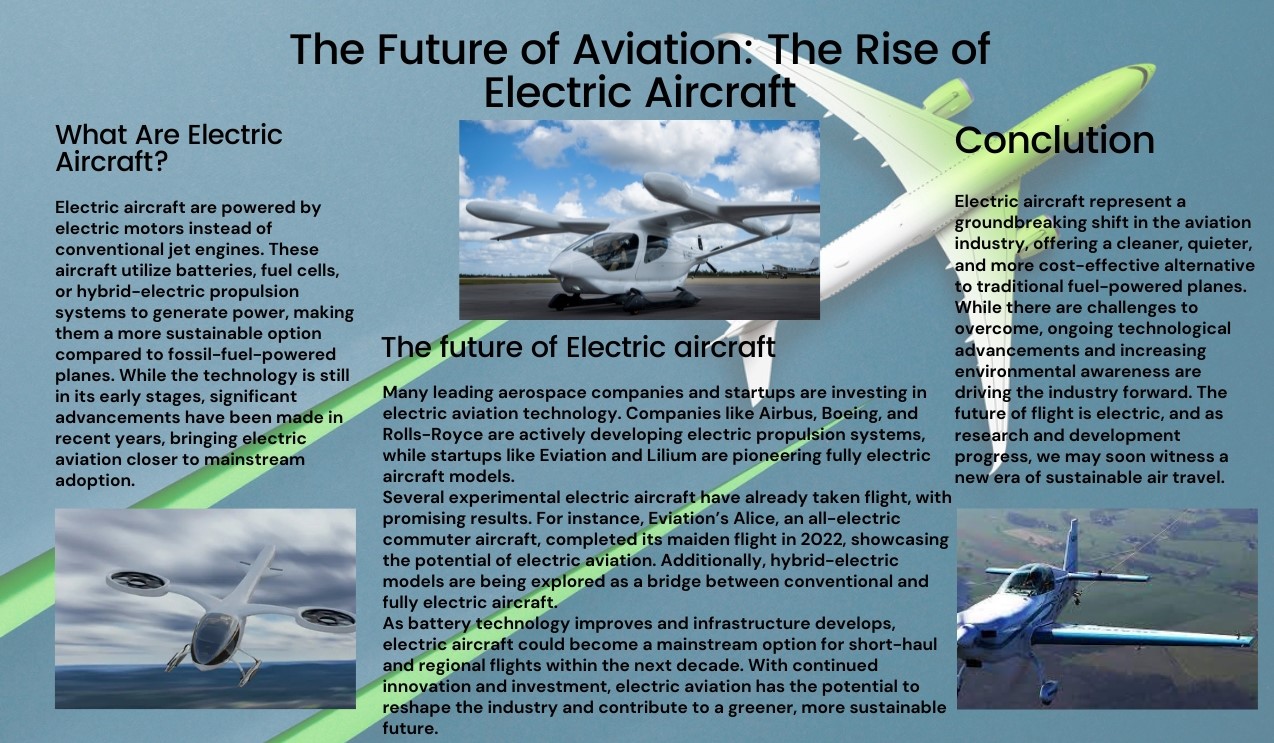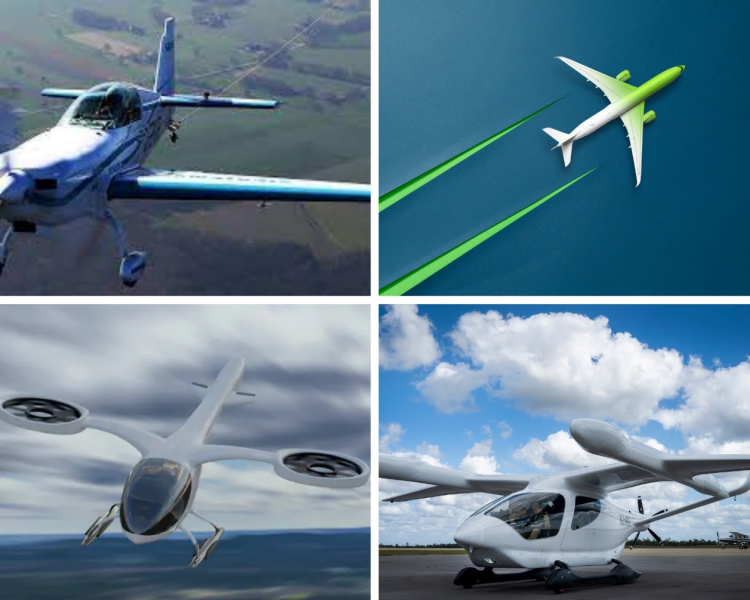The Future of Aviation: The Rise of Electric Aircraft
February 04,2025

The aviation industry is on the brink of a revolutionary transformation, with electric aircraft emerging as a promising solution for sustainable air travel. As concerns about climate change and carbon emissions continue to grow, the demand for cleaner, more efficient transportation has never been higher. Electric aircraft offer a viable alternative to traditional fuel-powered planes, reducing both environmental impact and operating costs.
What Are Electric Aircraft?
Electric aircraft are powered by electric motors instead of conventional jet engines. These aircraft utilize batteries, fuel cells, or hybrid-electric propulsion systems to generate power, making them a more sustainable option compared to fossil-fuel-powered planes. While the technology is still in its early stages, significant advancements have been made in recent years, bringing electric aviation closer to mainstream adoption.

Advantages of Electric Aircraft
1. Lower Carbon Emissions
One of the most significant benefits of electric aircraft is their potential to reduce carbon emissions. Traditional airplanes rely on fossil fuels, contributing to greenhouse gas emissions. In contrast, electric aircraft produce little to no emissions, making them an environmentally friendly alternative.
2. Reduced Noise Pollution
Electric motors are much quieter than conventional jet engines, which could lead to a significant reduction in noise pollution around airports and urban areas. This could pave the way for more flight routes, especially in noise-sensitive regions.
3. Lower Operating Costs
Electric aircraft have fewer moving parts compared to traditional planes, which means lower maintenance costs. Additionally, electricity is generally cheaper than aviation fuel, reducing overall operational expenses for airlines.
4. Increased Energy Efficiency
Electric motors are highly efficient, converting more energy into useful work compared to combustion engines. This results in better fuel efficiency and longer operational life for aircraft components.
Challenges in Electric Aviation
Despite the promising benefits, electric aircraft face several challenges that must be addressed before widespread adoption.
1. Battery Limitations
Current battery technology is a major limiting factor for electric aircraft. Batteries are heavy and have limited energy storage capacity, which restricts the range and payload of electric planes. Advancements in battery density and charging infrastructure are crucial for overcoming this hurdle.
2. Infrastructure Development
Airports and aviation hubs need to be equipped with charging stations and support systems to accommodate electric aircraft. The transition requires significant investment in infrastructure.
3. Regulatory Approvals
The aviation industry is highly regulated, and new aircraft technologies must undergo rigorous testing and certification before being deemed safe for commercial use. Regulatory bodies need to establish clear guidelines for electric aviation to ensure safety and reliability.
The Future of Electric Aircraft
Many leading aerospace companies and startups are investing in electric aviation technology. Companies like Airbus, Boeing, and Rolls-Royce are actively developing electric propulsion systems, while startups like Eviation and Lilium are pioneering fully electric aircraft models.
Several experimental electric aircraft have already taken flight, with promising results. For instance, Eviation’s Alice, an all-electric commuter aircraft, completed its maiden flight in 2022, showcasing the potential of electric aviation. Additionally, hybrid-electric models are being explored as a bridge between conventional and fully electric aircraft.
As battery technology improves and infrastructure develops, electric aircraft could become a mainstream option for short-haul and regional flights within the next decade. With continued innovation and investment, electric aviation has the potential to reshape the industry and contribute to a greener, more sustainable future.
Conclusion
Electric aircraft represent a groundbreaking shift in the aviation industry, offering a cleaner, quieter, and more cost-effective alternative to traditional fuel-powered planes. While there are challenges to overcome, ongoing technological advancements and increasing environmental awareness are driving the industry forward. The future of flight is electric, and as research and development progress, we may soon witness a new era of sustainable air travel.